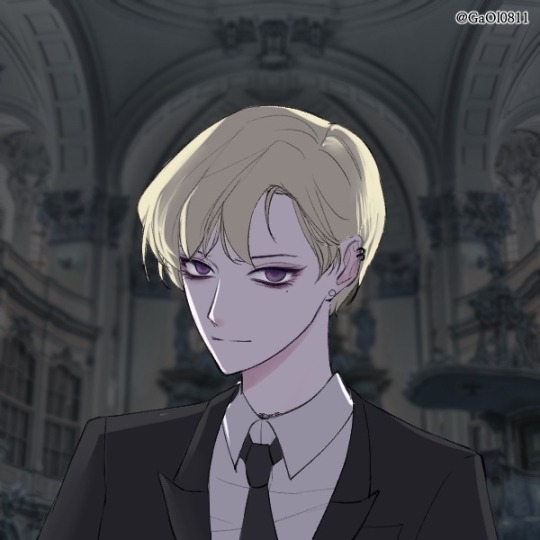#dacian
Text
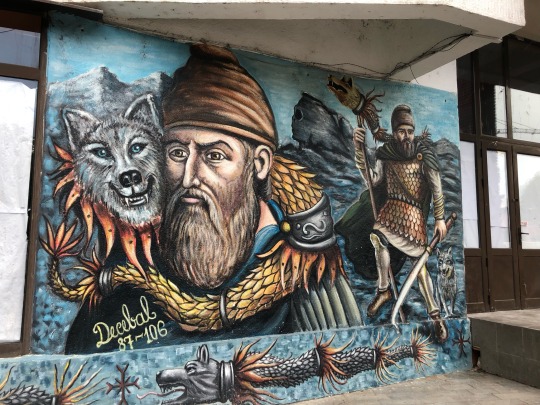
Street Art in Râmnicu Vâlcea, România
#streets in#romania#eastern europe#photography#europe#cityscape#ramnicuvalcea#city pictures#streets unseen#street art#decebalus#dacia#dacian#Dacian wolf#romanian sphynx#aesthetic#scenery#my photos#sphinx#oltenia
34 notes
·
View notes
Text
Can you believe that Romanian still has some very common words from the time of the Dacians. Words as common as mămăligă and cioc and leagăn, words as beautiful as pururea and jilț, words as sweet as brândușă and prunc, words as funny as morman and burtă, words as cold and heartless as curma and viscol, words as simple as copil and brad.
Whenever we speak these words, and many more, we honor them, we honor their presence, their bravery. They aren't forgotten nor obsolete. We just remember them differently.
Here's an article containing a full list:
46 notes
·
View notes
Photo
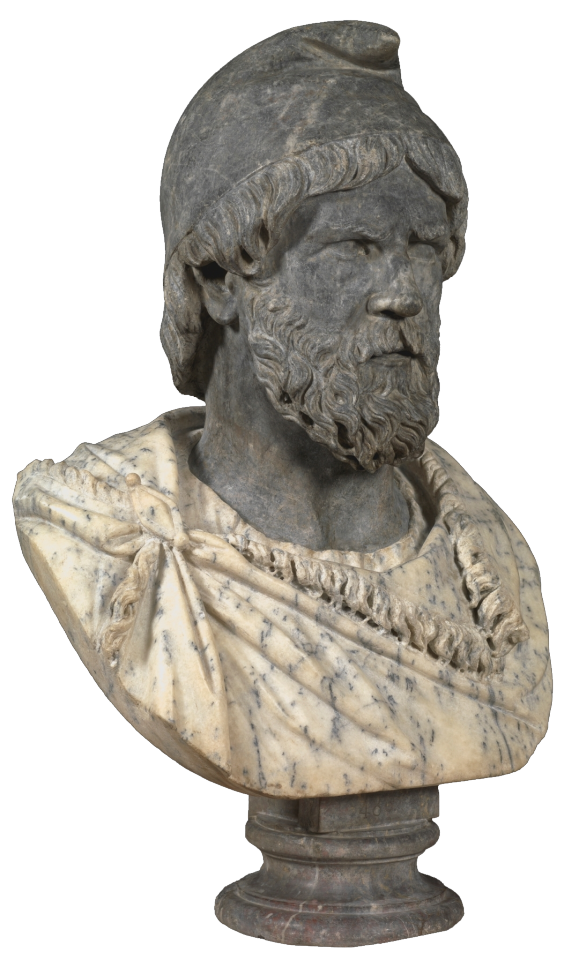
Dacian of the type from Trajan's Forum
120 - 130 (Head); XVIII century (Bust)
Anonymous, Roman Sculptor
African Marble
Museo Del Prado, Spain
-
Following the conquest of Dacia (essentially modern-day Romania and Moldova) by Trajan (AD 53-117), the image of its inhabitants, shown as captives wearing their distinctive clothing, was introduced into public sculpture to symbolize the triumph of Rome. Works of this type, possibly including the present example, were installed in the forum built on the emperor’s orders.
#phrygian cap#frigian cap#dacian#art#roman#roman art#western civilization#Western Europe#classical art#fine art#cradle of civilization#spain#europe#european art#romans#gaul#germanic tribes#europa#world history#phrygian#frigian#public domain
23 notes
·
View notes
Text
Cernunnos: The Good Liar
And now that I've probably offended a few people with my snazzy new epithet for the guy, it's time for me to try to spill some UPG all over this page.
Cernunnos is very special to me; he was the first deity to reach out to me and he's been a central point of my practice for as long as I've been active in it (there've been a few accidental hiatuses). He's introduced me to my second most important deity, the Horned Serpent, and through that, pointed me down the path I now currently walk.
I think, at least in GaulPol, he's pretty well known as a liminal deity, but that one has never quite sat perfectly for me. I think as I present my notes of my UPG, it'll become clear that Cernunnos as I understand him is more of a "union of opposites" than a "between all things" - something I definitely wouldn't have been able to enunciate not long ago.
First I remember not really having a clear way to describe him beyond "Druid, I think", which would at first glance look like a liminal role if it weren't for the fact I couldn't quite square that away in my head. And then I gave him a couple epithets, "Keeper of Secrets" and "Provider of Ecstacy" (both of these were written back to back, in the same prayer, and I still stand by them).
Then I began using the title "Songmaster(s)" for the three main deities on the interior of the Gundestrup Cauldron - Cernunnos, Taranis/the wheel god, and the Mother-Queen - and I began to look at music as a way for the gods to create, not just stories but create reality itself.
The next major one I remember is writing a prayer and sharing it with a Discord community October 31st 2022:
Songmaster, First Dancer
Truth is your friend and secrets are your trade
Madness, your tool, peace, your accomplishment
Your quiet patience is unshakeable, and your quick action is keen
And recently, as I was singing and trying to reflect on his relationship with the Mother-Queen, I found myself scribbling down some notes from a song I didn't fully intend to sing, addressed to him (quotes are exact lines):
"she shines on you, and you grow"
Shadow, child of sun; darkness, friend of light
"embrace light, embrace night all the more"
I heavily associate the Mother-Queen with the sun, light, and fire, and have had the thought "her light touches all things" in my head for a minute, and Cernunnos I associate with a dark, shadowy forest because of a couple of intense experiences, so the poetic play there was pretty obvious, but it took me a bit to start piecing out what this is all supposed to mean. One friend pointed out that, as we learn, as truth is illuminated to us, it also reveals how deeply our ignorance runs. Which I definitely think is a solid read, but for me personally, for my relationship with him specifically, I think it's deeper than that.
I've also come to believe that the interior panels of the Gundestrup Cauldron are a loose guide of what kind of religious life was expected of the practitioners, so I take it as a loose guide for me. And honestly, going into detail is going to require probably multiple series, but for now suffice it to say that I believe that, when we die, some of those people will be selected to try and earn a kind of divine status. I believe Cernunnos' primary role as depicted on the Gundestrup Cauldron is in teaching harmony between individuals and possibly between the natural world. I also interpret the Horned Serpent as the guide for those who've been chosen to try their hand at earning divinity. So in this context, Cernunnos is the teacher and the Horned Serpent a kind of deliverer.
Okay, that's all well and good, but what does that have to do with the rest of this rant? I've come to the conclusion that, if the Mother-Queen reveals, then Cernunnos' role to her is that he obfuscates. That he purposefully obfuscates certain truths in order that his devotee can learn. I think it's because there are certain lessons that can't really be told - not if you plan on these lessons actually sticking. Wisdom is earned, not given.
Hence the new epithet, "The Good Liar" - he who obfuscates things behind silence or confusing ideas that his student might find truth on their own accord, and come to a new and better place, perhaps even arming his devotees with the skills to move through whatever trials may await us after death.
#balkan paganism#celtic paganism#gaulish polytheism#personal gnosis#thracian polytheism#dacian polytheism#thracian#dacian#Gundestrup Cauldron#reconstructionism
21 notes
·
View notes
Note
🌑 to raven from Dacian. He's having nightmares and doesn't want to sleep alone. @elementalxfury
Getting rid of his old roommate had been a blessing for Raven. The guy was blabbering all the time and he was a herbs and Potions enthusiasts, exactly the subjects Raven found the least interesting in Hogwarts.
Dacian had specifically asked to share the room with him. There was something about his past Raven didn't quite know yet but that had granted him his request immediately. Dacian trusted him far too much, after all Raven just happened to be there when he was found. Or maybe it was the fact that he had secrets too and Dacian guessed that as well.
That night, as many others, Raven was laying in bed, eyes wide open. His double nature kicked in unpredictably, making him very awake or very sleepy in different moments of day and night. That night the Vampire side was the dominant one, and he been listening to the tickling clock for the last hours.
The footsteps came unexpected. He had heard Dacian tossing and turning in the lower bed, but he didn't expect him to come upstairs at all. Raven could perfectly see in the dark and the look on the Other's face appeared immediately not very reassuring.
Dacian said nothing, just crawled under the covers beside him. Raven froze a little, he wasn't used at all to have a warm body so close to him, leave alone in his bed at night.
He made some space to Dacian, who in response moved closer to him again. He was clearly half asleep and he was looking for comfort. Raven snuggled beside him, finding the situation more comfortable than expected. "It's ok." he whispered. "I'm here."
3 notes
·
View notes
Text
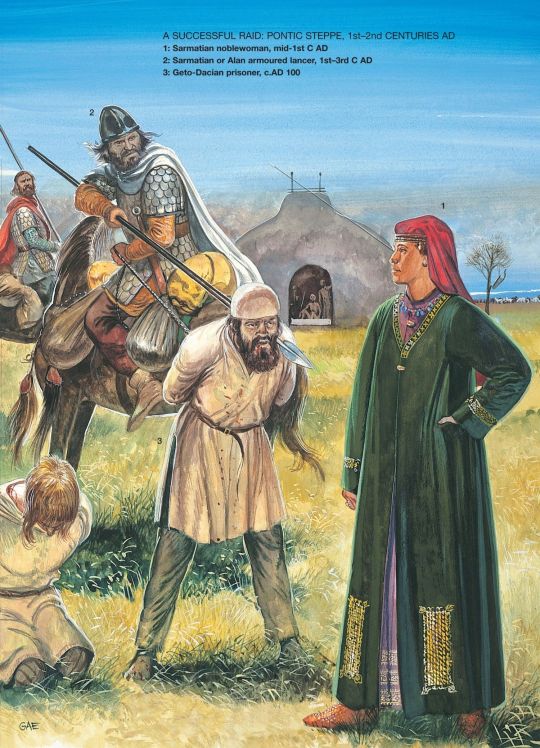
A Successful Raid: Pontic Steppe, 1st–2nd Centuries CE by G. Embleton. Illustration from book, The Sarmatians 600 BC - AD 450, from Osprey Publishing.
"During the 4th and 3rd centuries BC, the centre of Sarmatian power remained north of the Caucasus and in the 3rd century BC the most important centres were around the lower Don, Kalmykia, the Kuban area, and the Central Caucasus.
During the end of the 4th century BC, the Scythians, the then dominant power in the Black Sea Steppe, were militarily defeated by the Makedonian kings Philippos II and Lysimakhos in 339 and 313 BC respectively. They experienced another military setback after participating in the Bosporan Civil War in 309 BC and came under pressure from the Thracian Getai and the Germanic Bastarnai. At the same time, in Central Asia, following the Makedonian conquest of the Achaemenid Empire, the new Seleucid Empire started attacking the Sakā and Dahā nomads who lived to the north of its borders, who in turn put westward pressure on the Sarmatians. Pressured by the Sakā and Dahā in the east and taking advantage of the decline of Scythian power, the Sarmatians began crossing the Don river and invaded Skythia (later in the mediaeval period, the military campaigns of Ismā'īl Sāmāni against the Oγuz Turks in Central Asia would similarly pressure the Hungarians into moving westwards into the Pannonian Basin), and also migrated south into the North Caucasus.
The first wave of westward Sarmatian migration happened during the 2nd century BC, and involved the Royal Sarmatians, or Saioi (from Scytho-Sarmatian *xšaya, meaning "kings"), who moved into the Pontic Stepp, and the Iazyges, also called the Iaxamatai or Iazamatai, who initially settled between the Don and Dnieper rivers. The Rhoxolanoi, who might have been a mixed Scytho-Sarmatian tribe, followed the Iazyges and occupied the Black Sea steppes up to the Dnipro and raided the Crimean region during that century, at the end of which they were involved in a conflict with the generals of the Pontic king Mithradatēs VI Eupatōr in the Bosporan Khersonēsos, while the Iazyges became his allies.
That the tribes formerly referred to by Herodotus as Scythians were now called Sarmatians by Hellenistic and Roman authors implies that the Sarmatian conquest did not involve a displacement of the Scythians from the Pontic Steppe, but rather that the Scythian tribes were absorbed by the Sarmatians. After their conquest of Skythia, the Sarmatians became the dominant political power in the northern Pontic Steppe, where Sarmatian graves first started appearing in the 2nd century BC. Meanwhile, the populations which still identified as Scythians proper became reduced to Crimea and the Dobruja region, and at one point the Crimean Scythians were the vassals of the Sarmatian queen Amagē. Sarmatian power in the Pontic Steppes was also directed against the Greek cities on its shores, with the city of Olbia Pontikē being forced to pay repeated tribute to the Royal Sarmatians and their king Saitapharnēs, who is mentioned in the Protogenēs inscription along with the tribes of the Thisamatai, Scythians, and Saudaratai. Another Sarmatian king, Gatalos, was named in a peace treaty concluded by the king Pharnakes of Pontos with his enemies.
Two other Sarmatian tribes, the Sirakoi, who had previously originated in the Transcaspian Plains immediately to the northeast of Kyrkania before migrating to the west, and the Aorsoi, moved to the west across the Volga and into the Caucasus mountains' foothills between the 2nd to 1st centuries BC. From there, the pressure from their growing power forcing the more western Sarmatian tribes to migrate further west, and the Aorsoi and Sirakoi destroyed the power of the Royal Sarmatians and the Iazyges, with the Aorsoi being able to extend their rule over a large region stretching from the Caucasus across the Terek–Kuma Lowland and Kalmykia in the west up to the Aral Sea region in the east. Yet another new Sarmatian group, the Alanoi, originated in Central Asia out of the merger of some old tribal groups with the Massagetai. Related to the Asioi who invaded Baktrianē in the 2nd century BC, the Alanoi were pushed west by the Kʰɑŋ-kɨɑ people (known to Graeco-Roman authors as the Ιαξαρται Iaxartai in Greek, and the Iaxartae in Latin) who were living in the Syr Darya basin, from where they expanded their rule from Fergana to the Aral Sea region.
The hegemony of the Sarmatians in the Pontic Steppe continued during the 1st century BC, when they were allied with the Scythians against Diophantos, a general of Mithradatēs VI Eupatōr, before allying with Mithradatēs against the Romans and fighting for him in both Europe and Asia, demonstrating the Sarmatians' complete involvement in the affairs of the Pontic and Danubian regions. During the early part of the century, the Alanoi had migrated to the area to the northeast of the Lake Maiōtis. Meanwhile, the Iazyges moved westwards until they reached the Danube and the Rhoxolanoi moved into the area between the Dnipro and the Danube and from there further west. These two peoples attacked the regions around Tomis and Moesia, respectively. During this period, the Iazyges and Rhoxolanoi also attacked the Roman province of Thracia, whose governor Tiberius Plautius Silvanus Aelianus had to defend the Roman border of the Danube. During the 1st century BC century, various Sarmatians reached the Pannonian Basin and the Iazyges passed through the territories corresponding to modern-day Moldavia and Wallachia before settling in the Tisza valley, by the middle of the century."
-taken from wikipedia
8 notes
·
View notes
Photo

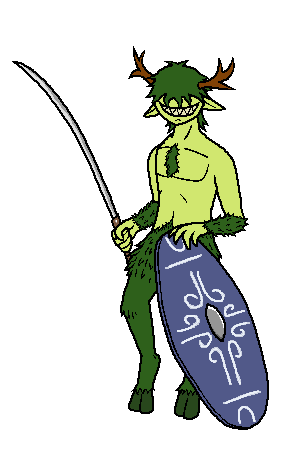
gift for a friend of his faun goblin thing, faublin
6 notes
·
View notes
Text


《 f r e i e 'Ich' / FaceClaim - A u s w a h l 》
Name: Dacian DeRovère
Alter: 12-15
Wesen: Dämon
Geburtsort: Schweden 🇸🇪
Sohn von: Dacara & Cassian DeRovère
Zwilling von: Dylon DeRovère
Bruder von: Decan DeRovère & Dariusz Grant-Turner
Enkel von: Logen Turner, Valery A. Brighton, Amira & Carlos Arjona, Orlando DeRovère
Neffe von: Raven & Louis Primes, Silas, Esmé, Amara, Faye DeRovère, Adria, Enrique, Miguel, Inéz & Diego Arjona, Hannibal, Lucius, Hazel & Eleonore Turner

『 Anmerkung: Name nicht variabel. 』
free Account
0 notes
Photo

#MELVID #CT. #STRAFORD #PARK #APH #DACIAN #RD (at Southeast Raleigh, Raleigh, North Carolina) https://www.instagram.com/p/CkpV3vsud74/?igshid=NGJjMDIxMWI=
0 notes
Text

Badea Cârțan (1849-1911)
Badea Cârțan made a journey on foot to Rome, and when he arrived at the city's edge after 45 days, said, "Bine te-am găsit, maica Roma" ("Pleased to meet you, mother Rome").
He wished to see Trajan's Column with his own eyes, as well as other evidences of the Latin origin of the Romanian people.
After pouring Romanian soil and wheat at the column's base, he wrapped himself in a peasant's coat (cojoc) and fell asleep at the column's base.
The next day he was awakened by a policeman who shouted in amazement, "A Dacian has fallen off the column!", as Cârţan was dressed just like the Dacians carved into the column; the event was reported in Roman newspapers and Duiliu Zamfirescu, Romanian representative in Italy.
He was a self-taught ethnic Romanian shepherd who fought for the independence of the Romanians of Transylvania (then under Hungarian rule inside Austria-Hungary), distributing Romanian-language books that he secretly brought from Romania to their villages. In all he smuggled some 200,000 books for pupils, priests, teachers and peasants; he used several routes to pass through the Făgăraş Mountains.
#romania#transylvania#rural#folk clothing#eastern europe#rome#trajan#column#dacian#dacia#travel#travel the world#on foot#history#latin language#peasant#shepherd#Italy#austria hungary#romanian
177 notes
·
View notes
Note
“[txt] i havent had anything other than coffee in 72 hours” -dacian to Sam. He's been studying EVERYTHING since his arrival in the 21st century
[txt to Dacian] What have you been doing that you haven't even ate in 72 hours? I'm in the area I'll bring you some food you can take a break. [Sam knew what he'd been doing he's studying like everything he can get his hands on.]
@brokenwretchedanddivine
1 note
·
View note
Text
Time Travel Question 15: The Library of Alexandria (Latin Edition)
If you have any non-Library of Alexandria lost works suggestions or more library of Alexandria items, please pop them in below for future polls.
#Time Travel#Emperor Claudius#Etruscan#Carchedonica#Petronius#Satyricon#Sulla#Agrippina the Younger#Livy#Pliny the Elder#Trajan#Dacians#Sulpicius Alexander
319 notes
·
View notes
Note
« don’t get any closer » @elementalxfury Dacian to raven pls
"Oh come on, why?" Raven was biting his lower lip in intense expectation, his arm extended in front of him to keep Dacian stuck on the wall, a couple of meters from the ground, without touching him at all.
It was against every single one of Raven's rules to show any use of his magic unless it was strictly necessary, but that didn't apply to Dacian. The young man was a Sorcerer too, an old Raven's acquaintance, and the Dhampir was aiming for a grand reunion. Shame the Other didn't seem to remember him at all. Raven hated not to leave a trace in people, should it be a great fucking session or an unnecessary Crimson Kiss. However, none of those had happened with Dacian - yet.
Raven let him drop on the ground as soon as he understood the Other was freaking out. Not what he was expecting.
"Raven." he nodded towards Dacian, hoping to recall a memory. "I bought your Dormiens Pulveris a few times in France. Well, I happen to still suck at potion making. Are you still into that business?"
3 notes
·
View notes
Text
Because I have just been informed that I’m not the only nerd who’s been staring at the cuneiform in the Council library for the past year like TELL ME WHAT YOU SAY...

The other day, I was reading the twitter of Nick Farmer, the linguist who provided the Dacian for WWDITS. He said that he used Old Persian Cuneiform for the writing (which would predate Nandor by 1500-2000 years) because he felt that cuneiform fit with vampiric vibes, but that the reading of the characters was “adapted to the phonology of reconstructed Dacian”.
To put all that in layman’s terms... Dacian is an extinct language that was used in ancient times in what we now conceptualize as Eastern Europe. While it was a super common language before and around the advent of the Common Era, archaeologists have found very little that’s actually written in the language. What we know of the language is largely reconstructed, which means that we don’t have much by way of full Dacian texts to study, so linguists have used what little we do have in addition to sources in other languages to try and reconstruct as much as they can.
That means that Farmer got a little creative here! Dacian isn’t typically written with cuneiform, but he said that there have been Old Persian Cuneiform texts found in Romania, which would put that form of writing in the same location as the Dacian language. I believe the word he used was “plausible”. lmao
(Romania is also where we find Transylvania, of course. *Jackie Daytona voice* And that just sounds cool.)
All that is a long way of saying that he used an ancient form of writing to write out the reconstructed sounds from another ancient language in order to create a vampiric tongue. Farmer also used Reconstructed Dacian when writing the conversation between the Baron and the Sire, so that would be the same language that we see in the Vampiric Council.
Anyway, if you’re interested, here’s the phonetic chart Farmer provided!
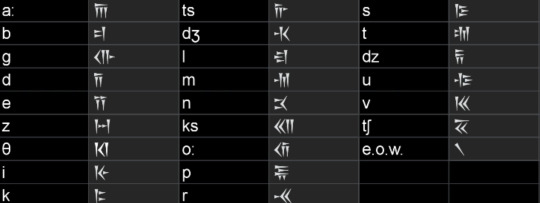
You can see that script used multiple places in s3, such as in the library and on the Vampiric Council website, but on his twitter, Farmer just gave the translation for the library.
𐎨𐎶𐏐𐎫𐎺𐏐𐎳𐎡𐎾𐎰𐎡𐎹𐏐𐎫𐎡𐎧
Tsam tu velthey tieks
As thou wilt, do.
This is, of course, a reference to Aleister Crowley’s most famous quote: "Do what thou wilt shall be the whole of the Law", which is from The Book of the Law. It’s an occult thing.
That phrase is also highlighted here:


So thanks for the workplace safety tips, Aleister!
And one more fun thing from his twitter, apparently these hats were made for the WWDITS art department, which I just think is cool:

#wwdits#what we do in the shadows#I just learned Middle Egyptian in school I don't know much of anything about Dacian#but I kind of get the impression that no one does lmao
457 notes
·
View notes

